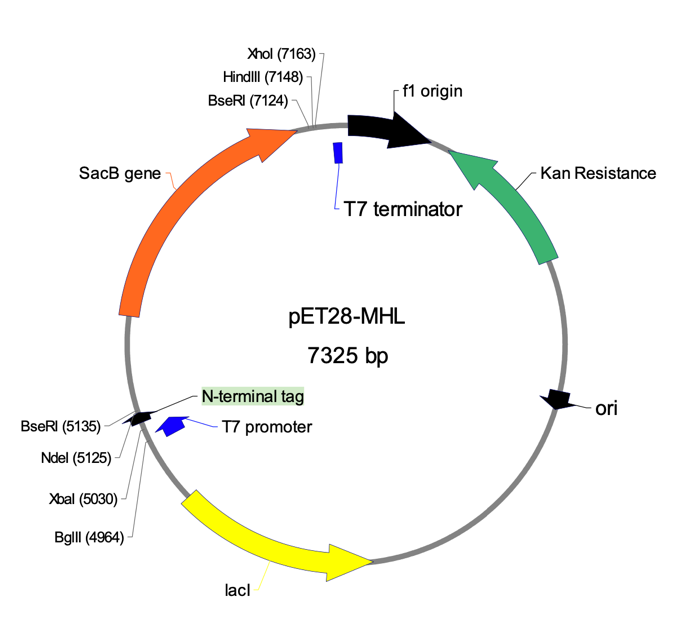In biotechnology, vectors are used as tools to transfer genes of interest into a living cell in order to force cells to produce uncharacteristic recombinant proteins. Thus, vector engineering is an up-and-coming technique that solves essential economic, applied, and scientific issues. Traditionally, circular bacterial DNA molecules called plasmids are used as vectors: such plasmids are usually responsible for the formation of antibiotic resistance in bacteria and are generally autonomous, in contrast to the main genetic molecules of the prokaryotic cell. Vectors can also be bacteriophages, that is, viruses that have the property of injecting their RNA into the bacterium and expressing genes through reverse transcription mechanisms. This answer attempts to qualitatively answer what characteristics and properties are desirable for vectors for use in genetic engineering procedures.
Since plasmids and bacteriophages are large groups, the researcher is constantly faced with choosing a particular phage or bacterial plasmid to use as a vector to introduce into the microorganism in recombinant form. The variety of possible variants is thus the predictor for selecting a specific vector for a particular task. In this sense, any vector’s first and most important property should be the ability to reproduce itself through built-in mechanisms. Indeed, almost any plasmid and bacteriophage can create multiple clones of itself, which helps intensify the expression of the desired genes in the microorganism and transmit these vectors through generations of strains. However, the very existence of the vector in the cell and its ability to reproduce itself must be utterly harmless to the cell in order not to affect the survival of the bacterial culture.
Vectors must have a low enough molecular weight to fit freely in the cytoplasm of the bacterial cell or yeast without causing physical damage. For example, a plasmid vector like pET28-MHL has a molecular weight of only 7.3 Kb (Loppnau, n.d.). By comparison, the size of whole bacterial DNA can be 14 Mb, which is thousands of times the size of vectors (Han et al., 2013). A minimal molecular weight of vectors is needed to exist freely in the bacterial cell and be transferred by bacteriophages if used as vector agents.
Based on the functional value of vectors, such plasmids or phages should be able to replicate, which means that they need a replication initiation site. Such a site is a physical point on the nucleic acid molecule from which replication begins, and bacterial plasmids and phages usually have such sites in a single version. For example, if the vector is the plasmid shown in Figure 1, the replication initiation site is the short black arrow ori. Convenient restriction sites must also be present in the vector, with which the ring molecule is correctly cut with the formation of sticky ends. Plasmids usually have several unique restriction sites, each requiring a specific restriction enzyme; this embedding requires the vector to retain its integrity. For example, when reapplying to Figure 2, the restriction sites are HindIII, Xbal, and BseRI.

It is essential to understand that incompetent bacteria or yeast die; not all cells will survive after putting foreign genes into them. In order to screen out only those microorganisms that have effectively incorporated the vector into themselves and thus gained the ability to produce the protein, the vector must have a selective marker. Antibiotic resistance genes are used for this purpose: after recombination, bacterial cultures are subjected to the killer effect of a particular antimicrobial, and only competent cells survive. Consequently, the presence of a selective marker in vectors and the ability to use a specific antibiotic for this marker are desirable properties of vectors. In addition, reporter genes that encode fluorescent proteins can be used as a marker: microorganisms with such recombinant proteins can glow under ultraviolet light, allowing them to be separated from incompetent cells.
In practice, plasmids may need to be purified from the cells, which means isolating a pure vector for further recombination if the vector was not purchased separately. Vector isolation should be easy and accessible, which means that a comparably easy separation of the plasmid from the cellular content is another desirable feature for vectors. For example, plasmids can be obtained by cell lysis and centrifugation. In addition to isolation, genetic engineering also challenges placing a recombinant vector inside a microorganism, be it a bacterium or yeast. Transfection methods are often used for this purpose: bacteriophage-based vectors are transformed in the cell more often than plasmid vectors.
To summarize, plasmid- or bacteriophage-based vectors have a set of properties that allow the use of unique vectors for specific biotechnological tasks. Among the desirable critical properties are harmlessness to the microorganism, the possibility of comparably fast replication, the availability of convenient restriction sites, and the need for signaling and reporter genes to detect competent cells. The researcher is free to choose the vectors that best meet the objectives of the research project based on the fundamental criteria highlighted in this paper.
References
Han, K., Li, Z. F., Peng, R., Zhu, L. P., Zhou, T., Wang, L. G.,… & Li, Y. Z. (2013). Extraordinary expansion of a Sorangium cellulosum genome from an alkaline milieu. Scientific Reports, 3(1), 1-7.
Loppnau, P. (n.d.). pET28-MHL vector (GenBank accession EF456735) [PDF document]. Web.